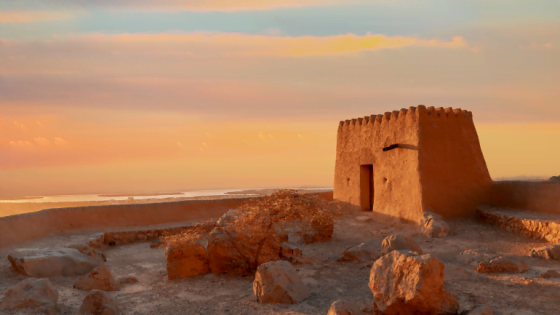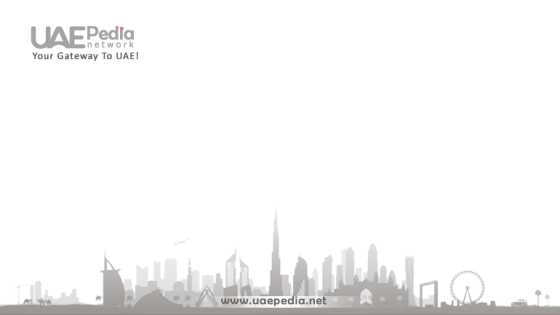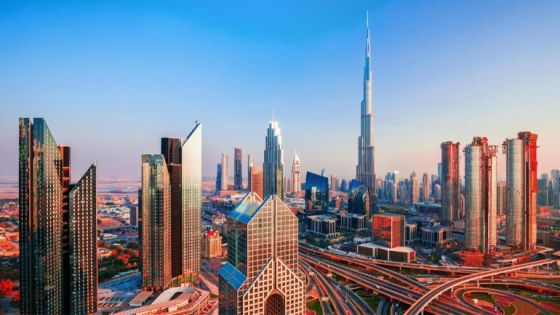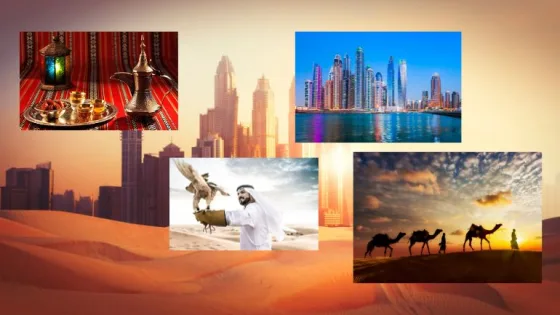Contents
Let’s agree that every emirate of the United Arab Emirates has its unique heritage. Every fort, every stone tells its own story which goes back thousands of years. Today we will take a break and travel back in time to 7000 BC and learn about Ras Al Khaimah history, where the rich cultural past takes side along with an impressive archaeological heritage.
Ras Al Khaimah history summary
Ras Al khaimah or “julfar” as it was known in the past is one of the richest heritage sites in the UAE. Due to its landscape ranges from mountains, its unique topography, desert, mangroves and beaches, Ras Al Khaimah’s had an excellent advanced trading civilization at the mouth of the Arabian Gulf. The region was famous for pearl trading, that of course was before the discovery of oil which transformed the Persian Gulf into one of the world’s wealthiest areas.
Ras Al Khaimah history went through many historical stages from the discovery of the region until now. Beginning with the presence of the Qawasim in the early 18th century as a huge maritime force which faced British occupation and its naval force in the early 19th century. Followed by the independence of the city of Ras Al Khaimah from Sharjah and the joining of Ras Al Khaimah United Arab Emirates.
Read more: Dubai development history
Pearl trading in Ras Al Khaimah
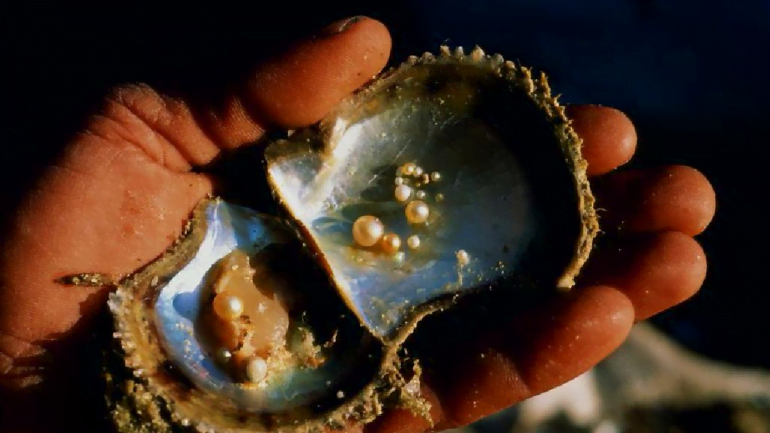
The warm waters of the Arabian Gulf was the first world’s destination for natural pearls. For centuries, RAK’s skilled divers have been diving below its surface to fetch oysters that nurture pearls of extraordinary luster. However, this rich trade came to an end when cheaper cultured pearls started to invade the market in addition to oil and gas fields exploration.
Till today, there are ancient and modern landmarks which indicate that pearling played an important role in Ras Al Khaimah history and economy. Here are two highlights of these attractions one of them has a rich history dating back to millennia:
Al Jazeera Al Hamra part of Ras Al Khaimah history
Al jazirah al hamra or Red Island as it is translated to Arabic, is the only remaining historic pearling village in the Gulf regionis. The island was ruled by the Zaab tribe and Sheikh Rajib bin Ahmed Al Zaabi was the ruler. Before the collapse of the pearl industry in the region, the Al Zaab tribe maintained a fleet of 25 pearl fishing boats.
On the other hand, Al Jazeera includes all the traditional elements like mosque, watchtowers, fort, museum and houses in different designs. By visiting the island you can take a tour and see all these attractions from history dating back to the bronze age.
Read more: Abu Dhabi history
The Suwaidi pearls farm
Suwaidi Pearls is the only commercial pearl farm in the UAE. The farm established in 2005 by the world’s first Arabian pearl farmer Mr. Abdulla Al Suwaidi. Thanks to this farm, the region is now farming Arabian Pearls in the surrounding seas for the first time in its history.
Visitors can visit the Suwaidi Pearls Farm in Al Rams, which is located in the northernmost region of Ras Al Khaimah and take a pleasant trip to learn more about the culture significant of pearl farming in UAE.
Read more: Historic Dubai
Significant Events in Ras Al khaimah History Timeline
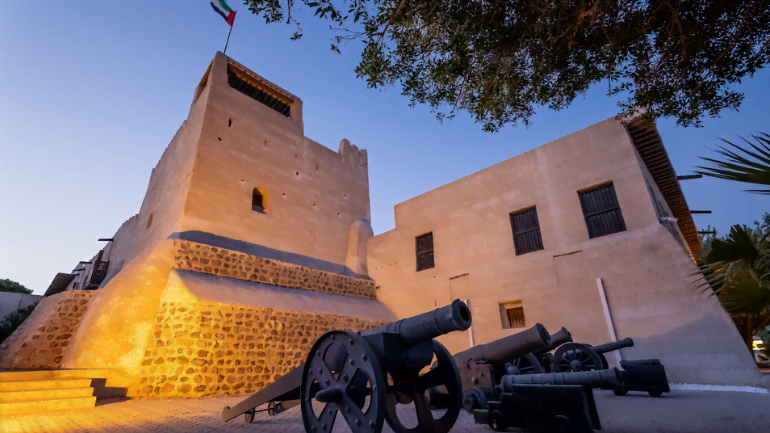
The history of Ras Al Khaimah went through many historical events to reach what it is today. From confronting the British occupation to independence from the Emirate of Sharjah, ending to declaring it one of the seven emirates.
In this timeline, we review the most important events in Ras Al Khaimah history:
| Early 18th century | Early 19th century | In 1822 | In 1869 | From Sep 1900 to Jun 1921 | In 1972 | In 2010 |
| The Qawasim clan established itself in Ras al-Khaimah. | The British naval force occupied Ras al-Khaimah to stop the powerful maritime stranglehold of the Qawasim. | Sheikh Sultan bin Saqr Al Qasimi accepted Britain’s protection to keep the Ottoman Turks out due to its importance. | Ras al-Khaimah (rak) became fully independent from neighboring emirate Sharjah. | Ras Al Khaimah re-incorporated with Sharjah, and the last governor became its next independent ruler. | Emirate of Ras al-Khaimah, joined the United Arab Emirates under the leadership of Sheikh Saqr bin Mohammad al Qasimi. | His Highness Sheikh Saud bin Saqr Al Qasimi, UAE Supreme Council Member, became the Ruler of Ras Al Khaimah. |
Read more: UAE culture
Facts about Ras Al Khaimah
Ras Al Khaimah history is full of historical moments and landmarks that made this emirate one of the most ancient an glorious regions in the Arabian Gulf region. Here are most 6 fascintaing facts about this unique emirate:
- Ras Al Khaimah history dates back to the bronze age.
- The first UAE’s pearl farm is i Ras Al Khaimah.
- It is home for Jebel Jais the UAE’s highest mountain.
- Ras Al Khaimah has the longest zip-line.
- In Ras Al Khaimah animals can roaming around freely.
- Beaches in Ras Al Khaimah are fabulous.
What was Ras Al Khaimah known for in the past?
pearls trading.
How did Ras Al Khaimah get its name?
The emirate is named after a tent was erected there to facilitate navigation.
What is unique about Ras Al Khaimah?
It is known for its pearl farms, fascinating landmarks, and wonderful beaches.
Who is the founder of Ras Al Khaimah?
Sheikh Saqr bin Mohammed Al Qasimi
In conclusion, today our story is not about Dubai or Abu Dhabi, but about a lesser-known emirate, one of the richest in tradition and heritage. The place from which pearls were collected and decorated the crowns of world’s kings and queens.
